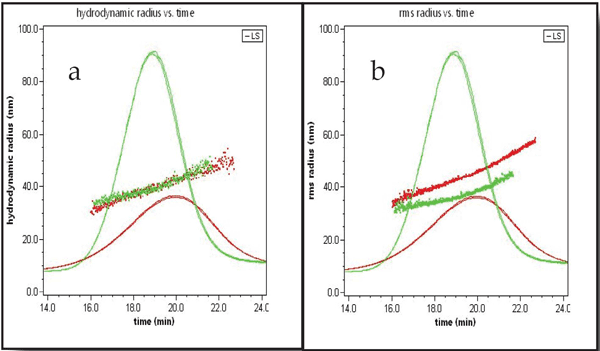Wyatt Technology’s FFF-MALS Provides Efficient Liposome Characterization
Posted: 26 September 2011 | | No comments yet
Field Flow Fractionation (FFF) technology announced…


Wyatt Technology logo
Wyatt Technology Corporation, the world leader in instrumentation for absolute macromolecular characterization and software, announces that its field flow fractionation (FFF) technology combined with multi-angle light scattering (MALS) and quasi-elastic light scattering (QELS) enables rapid measurements of particle size, size distribution, particle count, as well as structure.
The combined system performs the most difficult sizing tasks in key areas of research and development in molecular biology and nanotechnology analyses, including the separation and characterization of liposomes and nanoparticles. This novel technology is illustrated in a new application note, titled “Liposome Characterization by FFF-MALS-QELS”, which is available to download free-of charge via http://www.wyatt.com/files/literature/Field_Flow_Fractionation-Liposome_Characterization.pdf.
Liposomes are made of lipid bilayers. The size of a liposome ranges from some 20 nm up to several micrometers and may be composed of one or several concentric membranes. Liposomes possess unique properties owing to the amphiphilic character of the lipids, which make them suitable for drug delivery. Liposomes have attracted considerable attention as potential vehicles for drug delivery to selected cells or tissues in vivo. Therefore, it is of great importance to monitor liposome size and encapsulation during liposome research, formulation, manufacturing and quality control. However, conventional methods to characterize liposomes fail to perform efficiently and to cover the whole size of liposomes.
In this new application note, a method combining the Wyatt Technology Eclipse FFF system with a DAWN HELEOS and online QELS was used to analyze two liposome samples, one empty, and one filled. The results demonstrated that the combined method is capable of determining the degrees of encapsulation and the internal structures of the two liposomes without making assumptions.
The FFF system offers a number of distinct advantages over column separation techniques for many applications. The method is robust and easy to use, involving minimal shearing and enabling a broad separation range, from small proteins (nm) to large particles (µm). FFF is a non-destructive technique that achieves true particle size distribution and on-line absolute characterization of a wide range of solutions and dispersions. Combined with MALS detectors, the method can determine the absolute size and molar mass distributions as well as the structure and conformation of the particles.


Caption: Figure 1. Hydrodynamic radius (a) and root-mean square radius (b) plotted against elution time overlaid with 90° LS signals for empty liposome sample (red) and filled liposome sample (green). The Rh and Rg values are determined by the respective QELS and MALS detectors. The results from duplicate runs of each sample are shown here to demonstrate the reproducibility of the FFF-MALS-QELS analysis.
For more information on Wyatt Technology’s instruments or to obtain a copy of the new application note, please visit http://www.wyatt.com/ or email [email protected].




